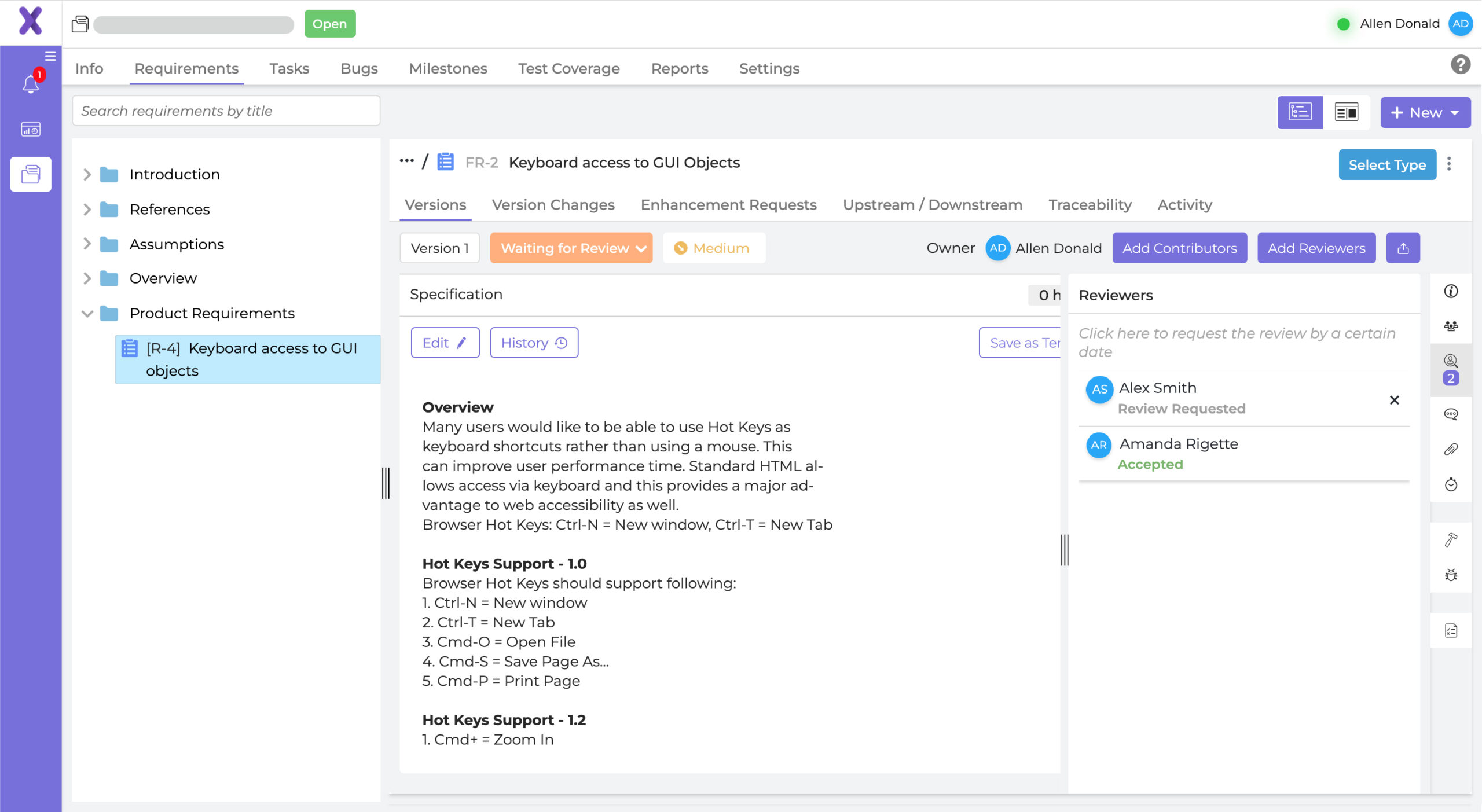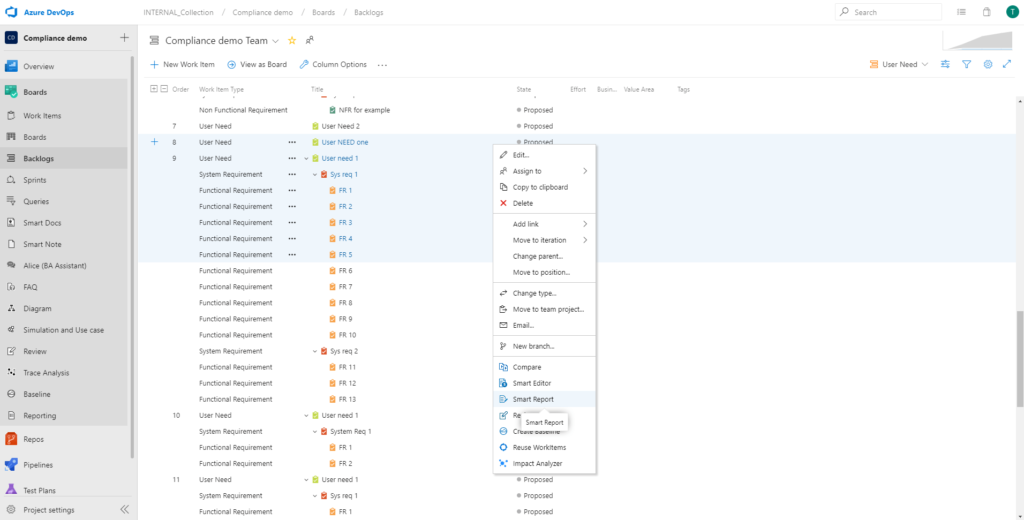Requirements management is one of the most important and fundamental processes of successful project delivery. As per experts, having an error-free requirements management activity can position your project for lasting success.
In this blog, we will cover everything you need to know about requirements management software. Let’s jump right in.
Impact of Poor Requirements Management
According to research, the impact of poor requirements management system is too big to ignore. Here are the top-3 three reasons why projects fail:
- Incomplete requirements (13.1%)
- Changing requirements (11.8%)
- Unclear statement of requirements (13%)
Needless to say, if your project’s requirements management is not up to the mark, you are already setting your project up for failure.
Why is Requirements Management Important in Software Development?
With software products becoming increasingly complex, managing the software lifecycle can become tricky. This is where a robust requirements management solution can come in handy.
In fact, according to research, Requirement Engineering is a key tenet of the software development process. Data further indicates that software requirement errors can add up to an overwhelming 70-85% of additional costs due to project rework.
In the context of software development, requirements management helps:
- Discover the purpose, real-world goals, and key functions of the project, along with understanding the software constraints of the system
- Identify the key stakeholders and analyze their needs
- Document and review stakeholder needs so that everyone involved in the project is on the same page and can communicate effectively
How to Efficiently Gather Software Development Requirements?
Here’s a useful step-by-step lowdown of how you can gather software development requirements:
Step 1
The first step is to identify the relevant key stakeholders, which can be challenging as projects often have hidden stakeholders that go unnoticed. Some of the most important stakeholders you must think about are customers, decision-makers, users, system administrators, internal stakeholders, executives, customer support, marketing and sales, key suppliers, distributors, and so on.
Step 2
Next, laser-focus on defining the project’s end-goals and objectives. Think about what you want to achieve with the product in question. Some other questions you may want to ask yourself include the following:
– How will this product help your customers?
– What are your organization’s long-term and short-term business goals
– What are some of the most important actionable, specific, and measurable objectives you want to achieve with the product
Pen down the answers to all these critical questions and state them clearly. This will help you get a seamless sign-off from your stakeholders and will help you to build a useful framework for informed decision-making.
Step 3
Collaborate with the stakeholders and get their understanding of the requirements needed. You can drive questionnaires, surveys, and interviews to get actionable data and inputs from the team.
Step 4
Use the software tool like Xebrio to document the requirements and keep a copy handy for everyone to see (and use).
Step 5
Confirm and prioritize the requirements as needed. The tool will empower you to review, confirm, and make changes to the requirements as the needs and goals change with every iteration.
Are Requirements Gathering Tools Necessary for Software Development?
Yes, a requirements gathering tool can empower software teams to produce error-free products and detect issues early on, thereby reducing the scope for rework and lowering costs in the software development cycle process.
Most importantly, the tool empowers requirements managers to ensure that the product goals are met successfully–on time and within the stipulated budget. The engineering team will be able to review, analyze, document, and prioritize requirements and drive consistent communication.
What is Requirements Management Software?
Requirements management software allows you to document, trace, analyze, and monitor changes to requirements. These requirements can then be sourced via a centralized and highly-accessible location.
What are the Features of a Good Requirements Management Software?
In terms of the must-have features, consider the following project management software requirements checklist:
- Methodology: The tool must be flexible enough to offer extensive support for different kinds of software development methodologies
- Hierarchy: The tool must allow requirements managers to categorize tasks, functions, and requests on different levels and in a hierarchical manner
- Traceability: It must provide end-to-end traceability and reduce the chances of missing key requirements and functionalities during testing
- Collaboration: It should provide collaboration among team members and allow people to work together reliably and remotely
- Import/export: It should help you to import/export requirements from other tools and systems as easily as possible
- Safety: It must provide the required roles and permissions so that your work stays safe and secure
How to Evaluate a Good Requirements Management Software?
Wondering if there’s a project management software requirements checklist? Yes, there is! When it comes to choosing the best requirements management software, follow these expert-approved tips:
Tip #1: Start by determining your project needs and analyzing the key challenges your team faces while delivering projects. Once you have this documented, you can look for the most important features you’ll need to drive on-point project delivery.
Tip #2: Make sure to compare the top 5 features you gathered in the previous step to other requirements management tools. Remember that each tool comes with a different set of functions, features, and advantages.
Tip #3: Ensure that the tool you choose provides plenty of opportunities for boosting accessibility. This includes the ability to share documents, reports, data, and files anytime and anywhere.
Tip #4: Factor in the tool’s compatibility with your organization’s existing systems and processes. This will boost your organization’s process of digital transformation.
Tip #5: A rather obvious tip but make sure that the tool is easy to use. If it is too complicated for your team members and there is a steep learning curve involved, then your team won’t be using it.
Tip #6: Prioritize the tool’s ability to offer personalization and customization. The tool must be flexible enough to accommodate your needs.
Tip #7: Keep monitoring and evaluating the impact of the tool on your product lifecycle and the business at large.
What are the Benefits of a Requirements Management Software?
Whether you are using an open source requirements management software or not, there are many advantages of using a requirements management system such as:
- Reduced cost of development throughout the project lifecycle
- Leads to fewer defects within the product and mitigates risk for safety-driven products
- Accelerates delivery and boosts reusability
- Ensures end-to-end traceability among all stakeholders
- Helps project managers to tie the requirements to the test cases
What are the Different Requirements Management Software?
There are multiple software for requirements management in the market today. Here are our top-3 recommendations for software requirements management tools:
1. Xebrio

Xebrio is a complete requirements management software that empowers requirements managers to cover the entire project development lifecycle–from requirements to deployment. Think of it as a requirements management ecosystem that allows you to:
- Define and freeze requirements early on with key stakeholders and drive greater collaboration
- Keep a tab on the evolving needs of the stakeholders and document requirement changes in real-time
- Monitor and manage requirements interdependency and assess their impact
- Drive greater traceability by tracking requirement delivery through releases and relating implementation tasks to requirements
2. Modern Requirements

Modern Requirements4DevOps is the only Requirements Management tool that is built into Azure DevOps. This means you won’t have to toggle between third-party apps to drive seamless collaboration. From creating requirements documentation and diagrams to reusing key requirements across projects, this tool is purpose-built for teams of all scales and sizes.
3. Visure
If you are looking for a software requirements management tool that allows you to streamline processes relating to task collaboration, configuration management, and so on, Visure is for you. From creating requirements relationships to generating hierarchies, this tool enables you to achieve everything from a centralized place.
Final Thoughts
Requirements management software has emerged as a must-have for organizations today. Since it is near-impossible to get a concrete and complete understanding of the requirements at the very beginning of the project, the requirements are bound to change throughout the project lifecycle.
Having requirements management software at hand can help project managers to keep track of the deliverables and ensure that the stakeholder requirements are met every single time.






0 Comments